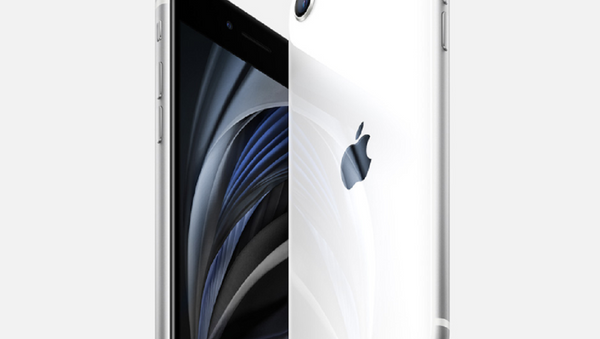According to a Wednesday news release, the second-generation iPhone SE includes a 4.7-inch Retina HD display and Touch ID for “industry-leading security.” In addition, the phone, which is a newer version of the iPhone SE that debuted in 2016, includes an “Apple-designed A13 Bionic” processor, which the phone manufacturer describes as “the fastest chip in a smartphone,” designed “to handle the most demanding tasks.”
The new iPhone SE has many of the features found in the iPhone 11 and 11 Pro but features a smaller display.
The release further notes that the “iPhone SE also features the best single-camera system ever in an iPhone, which unlocks the benefits of computational photography including Portrait mode, and is designed to withstand the elements with dust and water resistance.” Despite the iPhone SE’s noteworthy features, this is the first time the company has launched a new phone without in-person events, due to the coronavirus pandemic and associated lockdown measures.
The new phone will come in three colors: black, white and red.
“The first iPhone SE was a hit with many customers who loved its unique combination of small size, high-end performance and affordable price; the new second-generation iPhone SE builds on that great idea and improves on it in every way — including our best-ever single-camera system for great photos and videos — while still being very affordable,” Phil Schiller, Apple’s senior vice president of worldwide marketing, is quoted as saying in the news release.
“iPhone SE features the industry-leading performance of A13 Bionic that enables great battery life, takes stunning Portrait mode and Smart HDR photos, shoots amazing videos with stereo audio, is great for games and super fast web surfing, and is built with the same industry-leading security features our customers expect. We can’t wait to get iPhone SE into customers’ hands,” he added.
Despite Apple’s new release, the electronics giant revealed in February that it didn’t expect to meet the quarterly revenue guidance it provided for the second quarter of its fiscal year, because global iPhone supply would be “temporarily constrained” due to the COVID-19 coronavirus.
“While our iPhone manufacturing partner sites are located outside the Hubei province — and while all of these facilities have reopened — they are ramping up more slowly than we had anticipated. The health and well-being of every person who helps make these products possible is our paramount priority, and we are working in close consultation with our suppliers and public health experts as this ramp continues. These iPhone supply shortages will temporarily affect revenues worldwide,” Apple warned in a February news release.

